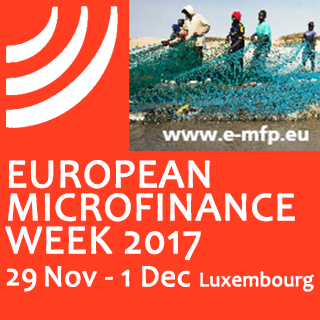At  the session titled “Building an Enabling Environment for Low-Income Housing Finance,” R V Verma, former Chairman of the National Housing Bank (NHB) (India) and consultant to the World Bank Group, said that “pushing the formal financial system to reach out to the informal sector [presents] a lot of challenges, but also huge opportunities. As part of financial inclusion, housing microfinance has a very important role.” Mr Verma went on to describe the market in India, which has an outstanding mortgage balance of INR 13 trillion (USD 200 billion) but a shortage of 24 million housing units. He also explained efforts to mitigate risk for housing lenders – both credit risk and issues with land title. Among the tools in use is a central registry of outstanding property loans. Mortgage insurance is also available even to informal workers – when lenders are willing to issue them loans.
the session titled “Building an Enabling Environment for Low-Income Housing Finance,” R V Verma, former Chairman of the National Housing Bank (NHB) (India) and consultant to the World Bank Group, said that “pushing the formal financial system to reach out to the informal sector [presents] a lot of challenges, but also huge opportunities. As part of financial inclusion, housing microfinance has a very important role.” Mr Verma went on to describe the market in India, which has an outstanding mortgage balance of INR 13 trillion (USD 200 billion) but a shortage of 24 million housing units. He also explained efforts to mitigate risk for housing lenders – both credit risk and issues with land title. Among the tools in use is a central registry of outstanding property loans. Mortgage insurance is also available even to informal workers – when lenders are willing to issue them loans.
Adedeji Adesemoye of the Central Bank of Nigeria described his institution’s efforts to address Nigeria’s shortage of 17 million housing units via resources including a loan package of USD 300 million awarded by the World Bank’s International Development Association (IDA) in 2012. While much of this package was for refinancing mortgages, USD 15 million of it was earmarked for housing microfinance. That portion was disbursed to nine microfinance institutions to test lending to existing (non-housing) clients for land acquisition, incremental construction and home improvement. After the early phase of the program, CBN extended the maximum housing microfinance loan term to 24 months, and it now is considering boosting the limit to 36 months.
Mr Adesemoye said interest rates of 2.5 to 3 percent per month are common in Nigeria. Eugen Doce of the Frankfurt School of Finance and Management pointed out rates are much lower in India and Armenia. Mr Verma said that, in India, lender rates of 11 percent per year are often subsidized to 5 percent.
Hayk Voskanyan, who recently worked for Armenia’s National Mortgage Company (NMC), explained that organization’s provision of financing to housing lenders, recently at interest rates of 9.5 percent per year for nine years. NMC has outstanding refinanced loans totaling USD 87 billion, with an average end-user obligation of USD 17,000.
Among the issues in Armenia’s market are the need to improve energy efficiency. Winters are extremely cold in the country, and much of the housing stock was built during Soviet times with the expectation of heavily subsidized natural gas. NMC has also been offering more local-currency refinancing to reduce foreign exchange risk. In terms of default risk, Mr Voskanyan explained that it remains with the retail lender even after the loan is refinanced by NMC. The money is called back if the borrower is 90 days past due. However, Mr Voskanyan says the rate of default is under 2 percent, a figure he attributes to strong credit scoring infrastructure in the country. However, Mr Voskanyan argued that more public education is needed to offset banks’ tendencies to push clients into less appropriate products that have higher margins.
Regarding new lenders entering the Indian housing market, Mr Verma said that eight “dinosaurs” still control about three quarters of the market, and that 100 other firms are having difficulty keeping prices low enough to be competitive. However, NHB is willing to work with the smaller players, especially if they are targeting poorer customers.
Mr Doce said that in past years, while developers in India were focused on building high-rise apartment buildings, the market wanted units with land attached. However, younger people are now more interested in apartments.
Looking forward, Mr Adesemoye said the successful track record of microfinance should encourage capital markets players to help boost housing lending for poor people. He also cited the “My Own Home” campaign, which is meant to boost financial literacy as it relates to home ownership.
This interview is part of a sponsored series on European Microfinance Week, which was held in Luxembourg from November 29 through December 1. MicroCapital was engaged to promote and cover the event on-site.
Sources and Additional Resources
European Microfinance Week 2017
http://www.e-mfp.eu/european-microfinance-week-2017/information
MicroCapital Coverage of European Microfinance Week Since 2012
https://www.microcapital.org/category/european-microfinance-week/
Similar Posts:
- MICROCAPITAL BRIEF: Temenos Launches Artificial Intelligence Platform for Mortgage Lenders
- MICROCAPITAL BRIEF: KEPFIC Member Pension Funds Invest $61m in Acorn Holdings, Kenya Mortgage Refinance Company (KMRC) to Boost Affordable Housing
- SPECIAL REPORT: Chamroeun Microfinance Scaling Up to Fund SMEs Supplying Piped Water in Cambodia
- SPECIAL REPORT: Enabling Microinsurance via Technology: RFID Tags Slash Fraud, Costs of Livestock Cover in Rwanda
- SPECIAL REPORT: Investors, MFIs Continue to Wrestle with Sustainable Finance Disclosures Regulation (SFDR) #EMW2023
